Choosing hiking shoes is a demanding task. Walking with a load, in harsh weather conditions and in conditions of low temperatures, on soils of different densities, dictate increased requirements for footwear for outdoor activities. We often hear complaints from novice tourists that their sneakers, which served faithfully in the city for a couple of years, began to fall apart after the first not very difficult hike. This does not mean that the sneakers are unusable, they just got into conditions, the operation in which was not provided by the manufacturer.
Content
The difference between urban and trekking shoes
What is it like, and which boots to choose for which hike? To better understand what kind of footwear you need, you need to imagine for what kind of activity you plan to buy it.
- Hiking - uncomplicated hikes or walks, only limited to one or two days, in an area with an uncomplicated relief and equipped trails. There are no increased requirements for wear resistance to hiking boots, lightness and comfort come to the fore. The upper material is usually a combination of textile and suede, which provides good ventilation.
The sole is made of EVA, or in combination with rubber. This design provides a comfortable fit without fatigue. Manufacturers equip models of the middle and high price category with a membrane and water-repellent impregnation. This allows moisture to be wicked away from the inside of the shoe and keeps your feet dry.
- Tracking, which is usually divided into light, medium and heavy. These are hikes over rough terrain of difficult terrain, with or without trails, along stream beds, rocky heaps, rocks, ice.
Trekking boots should not only provide comfort for the wearer, but also protect the foot from injury. When climbing or descending, an additional load falls on the ankle and knees, and if a backpack is behind the shoulders, it increases in proportion to the weight. Models for trekking are heavier, higher demands are placed on the construction of the outsole, which must securely hold the foot on any surfaces.
- Mountaineering. Mountain climbing in difficult weather conditions and at subzero temperatures.
Climbing boots are subject to the most severe loads. Stones, ice, crust can easily damage the top of the shoe, and constant drops in relief can injure the foot.
Design features of mountain boots
- One-piece upper in thick leather or injection molded plastic;
- welt for fastening cats;
- protection of the top in a circle from ice stones;
- reinforced multi-layer sole;
- insulation.
The height of hiking shoes is divided into:
- Low. Provides a comfortable fit over the leg and ankle freedom of movement. Due to the low height during hiking, low boots are often clogged with small stones and sand. For the same reason, they can easily get wet. Recommended for uncomplicated trekking with a light backpack.
- Average. Perfectly fix the foot, protecting it from sprains and dislocations. Supports the ankle while reducing stress on the ankle and knees. Can be used for medium to heavy trekking with a backpack.
- High.Excellent support for the leg, reducing stress on the ankle and knees when walking in mountainous terrain. However, the price for safety is the limitation of foot mobility, which leads to rapid fatigue. For many newbies, walking in high boots will be an unpleasant surprise.
You should know that each season has its own shoes. As in the situation with everyday shoes, models are divided into summer, demi-season and winter.
How to choose the right trekking shoes?
What to look for when buying?
The main mistakes when choosing trekking shoes:
- Carelessness in choosing the size. Trekking shoes should be tried on with a thick toe so that there is free space in the toe area, otherwise, when descending, the toes will constantly rest on the toe, which causes discomfort and can cause injuries to nails and calluses.
- Errors when choosing a shoe. Trekking boots should fit snugly around the foot. It is equally unacceptable for the foot to dangle in the boot, and excessive squeezing. On the hike, this will lead to calluses, or pain in the foot. If you feel that the last does not fit, try on a different pair.
- Buying a replica. Good trekking boots cannot be cheap because of the materials and technology used to make them. Therefore, if you see shoes at a price 3-4 times lower than the average cost, most likely they are fake. It remains only to guess what the manufacturer saved on in them, and how it will come back to haunt in the campaign.
- Model mismatch with load. Avoid wearing lightweight hiking shoes on a tricky backpacking hike, as they may not be able to withstand the stress, and climbing boots are also superfluous on a medium hike. Their stiff lasting fit and weight will wear you out on the hike.
Which shoes are better to buy?
The editorial staff of the site "bestx.htgetrid.com/en/" offers you an overview of the best trekking boots for 2020.
| 1 | THB Route. | 4 190 RUB |
| 2 | Garsport | 6 220 rub. |
| 3 | TREK | RUB 4,960 |
| 4 | EVA | RUB 2,995 |
| 5 | Garsport sajama | RUB 10,950 |
| 6 | La Sportiva Karakorum Evo Gtx | RUB 22,400 |
| 7 | Hanwag Makra Low GTX. | 11 543 rub. |
| 8 | Oboz Beartooth. | RUB 10,921 |
| 9 | Salomon Quest 4D 2 GTX. | RUB 14,999 |
| 10 | Adidas Terrex Trailmaker GTX. | RUB 11,990 |
Adidas Terrex Trailmaker GTX
An unexpected choice, as the company is better known for running shoes.
Suitable for hiking, short hikes without a backpack, and mountain jogging.
Upper material is fully synthetic, multi-layered. The sock is also protected by higher density synthetics.
The model uses a fast lacing system when elastic laces are tightened with a plastic drawstring.
The outsole in Adidas Terrex is two-layer. The EVA interlayer is shock absorbing. The main outsole is made of Continental rubber of different density.
Internal comfort is provided by a Gore-Tex membrane.
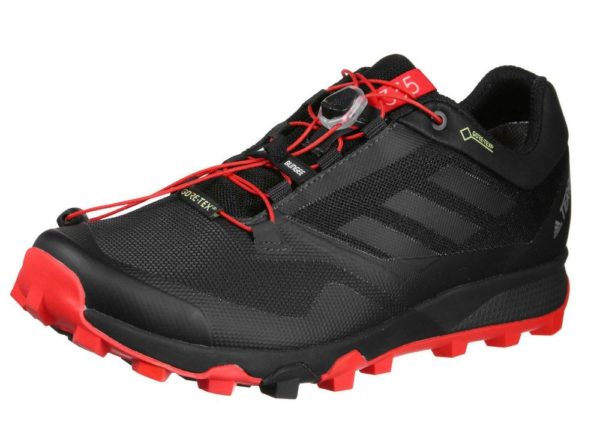
Advantages:
- light weight;
- good ventilation;
- outsole with good traction.
Disadvantages:
- quick lacing system constantly clings to branches;
- unreliable fastening of the lacing in the toe area.
Salomon Quest 4D 2 GTX
Mid-height boots. Suitable for medium difficulty trekking and mountain tourism.
Upper material - synthetic fabric, reinforced with genuine leather inserts for extra rigidity. The sock is protected by a polyurethane insert.
Built-in tongue keeps water out. Additional lacing fasteners are installed in the ankle area, allowing you to adjust the tension and make the fit more comfortable.
Inside the boot, an EVA insole that takes the shape of the foot and a Gore-Tex membrane.
In this model, Salomon uses a proprietary Contagrip outsole.

Advantages:
- dirt-repellent impregnation;
- durable materials;
- ergonomic design.
Disadvantages:
- fragile fittings;
- high cost in comparison with boots of its class.
Oboz beartooth
High boots for light to medium trekking from the USA. Adapted for off-season and wet conditions. Suitable for medium difficulty trekking in wet undergrowth and in areas full of water hazards.
The upper material is a combination of textile and cowhide with a proprietary membrane Oboz B Dry. The main function of the material is not moisture wicking, but water resistance. The toe of the boot is protected from stones by a rubber pad. In the heel, the boots are reinforced with a plastic insert with adjustable foot position. This design provides a comfortable foot position and a secure ankle fixation.
The sole is also of its own design, with an instep support and an EVA intermediate insert. The outer part has a multidirectional tread and reliably holds the boot on wet rocks, moss and clay surfaces.

Advantages:
- high water resistance combined with ventilation;
- reliable fixation of the foot;
- ease of adjustment.
Disadvantages:
- poor choice of lace material. It is advisable to change after purchase.
Hanwag Makra Low GTX
Sneakers from the German manufacturer for light trekking and hiking. The upper is constructed from a combination of textile mesh, suede and rubberized fabric on the toe and heel. Lacing is done on textile loops.
The inside of the shoe uses a mesh fabric combined with a membrane. Thanks to the textile on the outside, the sneaker breathes and wicks away moisture and dries quickly.
The sole material is two-layer. The inner part is a combination of EVA of Different density. External - Vibram Pepe series.

Advantages:
- ease;
- excellent ventilation;
- reliable foot support.
Disadvantages:
- not identified.
La Sportiva Karakorum Evo Gtx Anthracite / Red
High boots for medium to heavy trekking. A one-piece, water-repellent suede upper to keep moisture out. The front part, including the toe, is protected by a rubber pad.
Welts on the back and front for attaching crampons. You can use soft and semi-rigid options. The heel is reinforced with an insert fixing the foot. The midsole has an anti-torsion plate that protects the foot from damage when the sole is twisted. Comfortable lacing system with reinforced lace fastenings.
The inside of the boots is multi-layered, a mesh for a secure fit of the foot, a Gore-Tex Performance Comfort membrane.
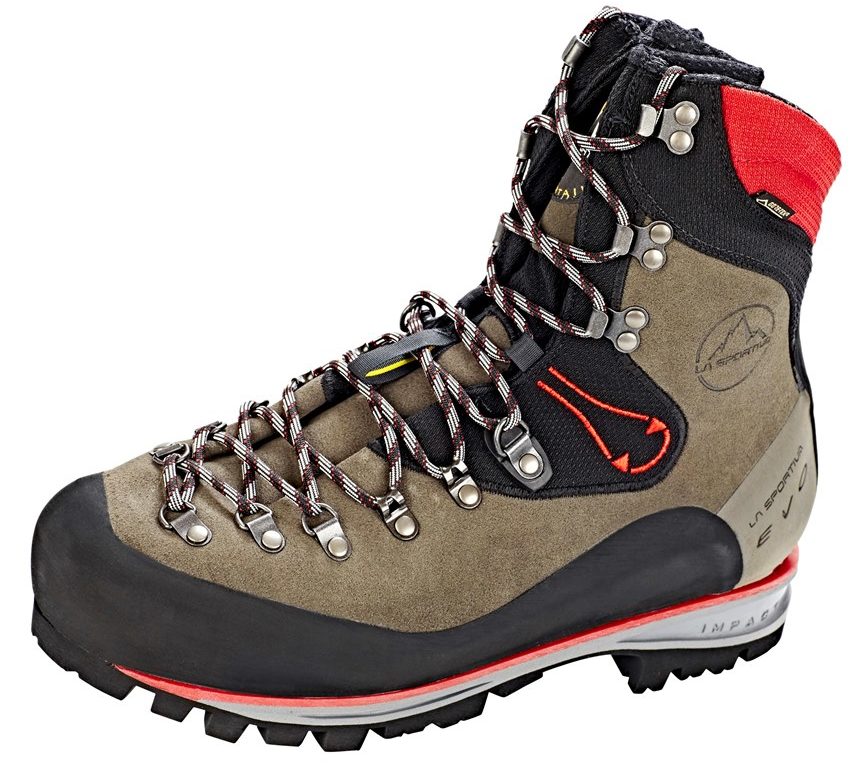
Advantages:
- high durability due to the one-piece upper;
- reliable fixation of the foot;
- comfortable lacing system; Vibram IBS outsole with excellent traction.
Disadvantages:
- because of the thick upper material, the membrane does not cope with the removal of excess moisture
Garspot sajama
In fifth place is another model of the Italian brand Garsport. Low boots are suitable for hiking and light hikes.
The upper is made of faux suede with perforation in the lacing area. The toe is reinforced with a thick rubber pad. In the ankle area, on the outside, there is an additional suede overlay that holds the foot, and the heel is reinforced with a nylon insert.
The inner part of the boot is a combination of several layers of nylon, providing water resistance and a comfortable fit over the foot.
Double-layer outsole - EVA and Vibram Friction made of wear-resistant rubber. This model does not have pronounced lugs and deep tread and is not very thick.
Produced by Garsport in unisex format. The buyer is offered a choice of three color options: orange, green and gray.
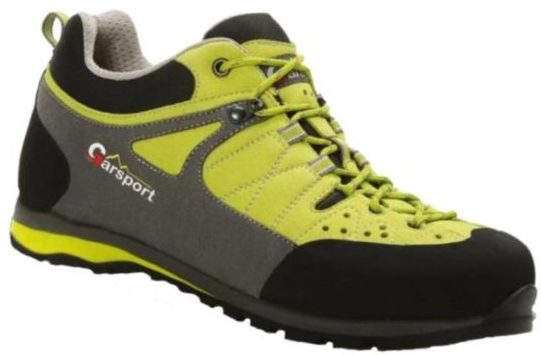
Advantages:
- attractive design;
- ease.
Disadvantages:
- not identified.
EVA
A replica of Chinese manufacturers, popular with buyers due to its low cost. Genuine leather upper. Around the perimeter, the toe cap is closed with a rubber pad that covers virtually the entire top of the boot, protecting the shoe from cuts, stones, and getting wet. The built-in tongue will keep moisture out of the boot.
The model is designed for winter trekking. Thanks to the two-layer insulation, the boots are comfortable up to -15.
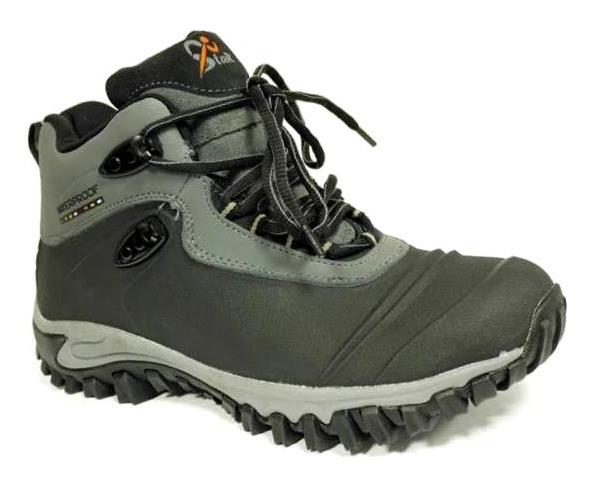
Advantages:
- low price;
- secure lacing due to additional hooks.
Disadvantages:
- uncomfortable fit due to the hard rubber of the welt, especially at subzero temperatures;
- insufficient ventilation.
TREK Fisher
The third place in popularity among buyers is taken by TREK Fisher boots of domestic production. These are mid-height boots for easy trekking and outdoor activities.
Upper material - nubuck with hydrophobic impregnation. The toe box is fully reinforced with a polyurethane overlay that protects fingers from stones, cuts and getting wet.
The inner part of the boot is finished with a multi-layer mesh that creates an air gap between the foot and the shoe. The designers deliberately refused to use a membrane in this model. The AirMesh mesh is well ventilated and dries faster than the membrane; nubuck also removes excess moisture through micropores. The combination of these factors will dry out your shoes quickly in a well-ventilated area.
The TREK Fisher outsole is made from synthetic rubber with cushioning in the midsole. It has sufficient strength for difficult trekking, but is not recommended in mountainous areas, for sharp stones, rigidity is not enough.
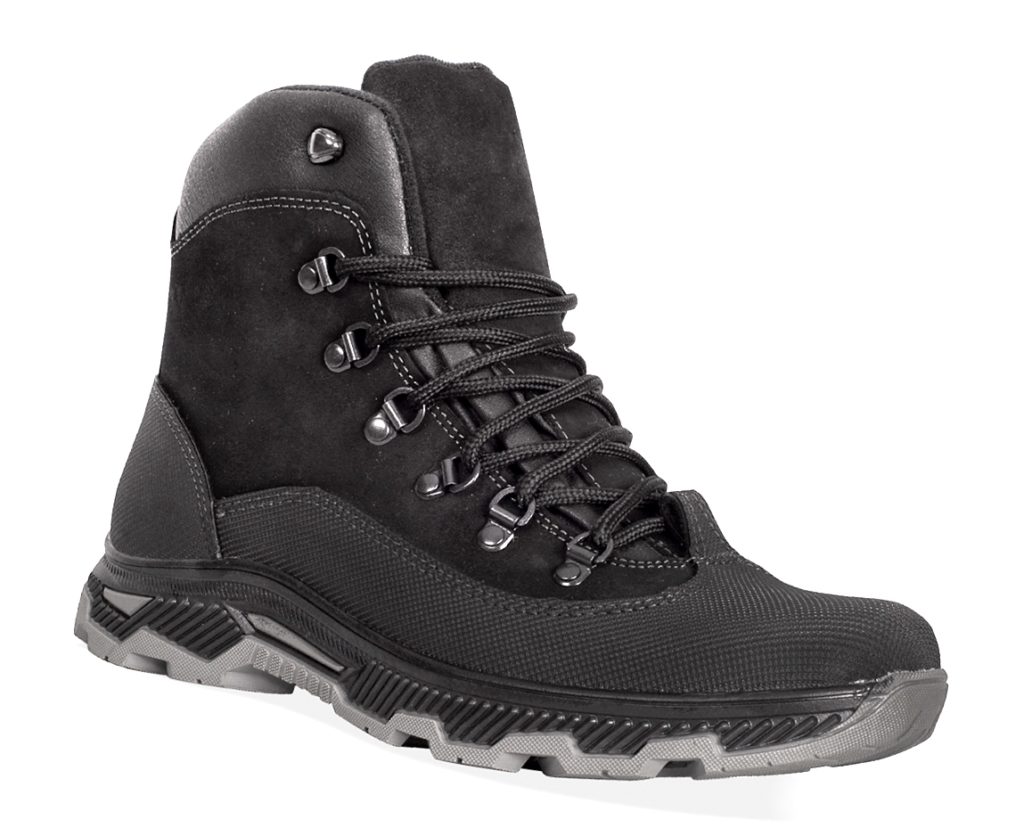
Advantages:
- good ventilation;
- protection of the toe and side surfaces of the boot;
- ease of care.
Disadvantages:
- small selection of pads.
Garsport Dublin Tex Green
Trekking boots of medium difficulty Italian manufacturer. Suitable for hiking in summer and off-season. Produced in unisex format.
Upper material - suede with water-repellent impregnation and nylon. The heel is reinforced with a dense nylon insert to support the foot.
A dual-layer EVA and proprietary rubber outsole provides shock resistance and fatigue-free foot traffic on challenging terrain.
The inside of the boot is made of synthetic mesh and Gartex membrane.
The Garsport company uses its own production membranes and soles for sewing, which reduces the price of the product.
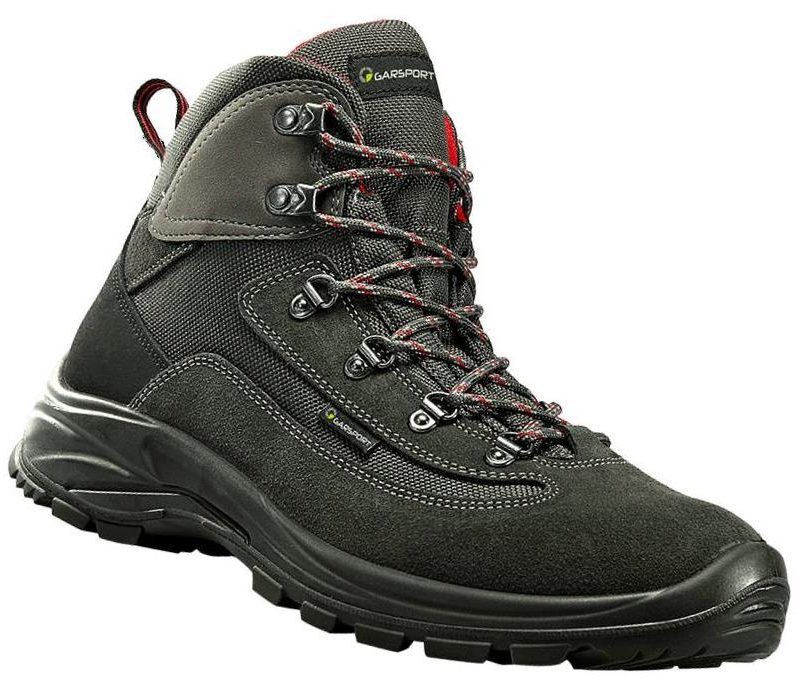
Advantages:
- low price;
- good ventilation;
- ease.
Disadvantages:
- weak protection of the sock;
- the outsole material glides on wet surfaces.
THB Route
A popular budget boot model for easy trekking in summer and off-season.
The upper material is a combination of leather and synthetic Cordura fabric, characterized by increased wear resistance. The leather is treated with water-repellent impregnation. The toe of the boot is not well protected, there is no rubber pad, there is a slight rise in the sole in the toe area.
The inside of the boot is a waterproof Dintex membrane. Additional comfort is provided by the heel reinforcement and memory foam insole.
The sole is two-component, made of EVA and wear-resistant rubber. The tread has a multidirectional pattern.
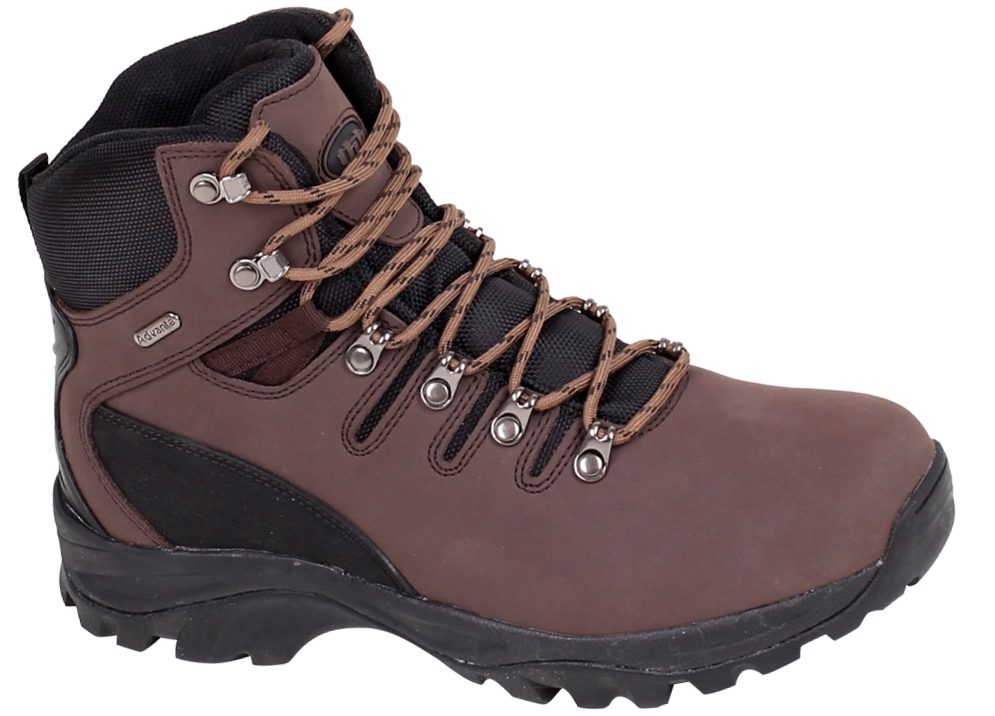
Advantages:
- low price;
- waterproofness.
Disadvantages:
- unreliable fittings;
- wide shoe.
Trekking shoe care
In conclusion, I would like to give recommendations on the care of trekking boots.
- Do not machine wash your sneakers and do not use automatic washing powder.
- The membrane in the shoe requires special care products that can be purchased at outdoor stores. When using standard powders, its pores become clogged, which reduces or negates vapor permeability.
- Do not dry your leather boots by the fire, as they may get wet. This will lead to deformation and cracks on nubuck or suede models.
- Use mastics and sprays to impregnate leather shoes. Without them, the upper material will dry out and lose elasticity. Some climbing boots, after 2-3 years, the socks can decrease by almost a size due to improper storage and care.
The correct choice and proper care of trekking shoes will allow the boots to serve you for a long time.












